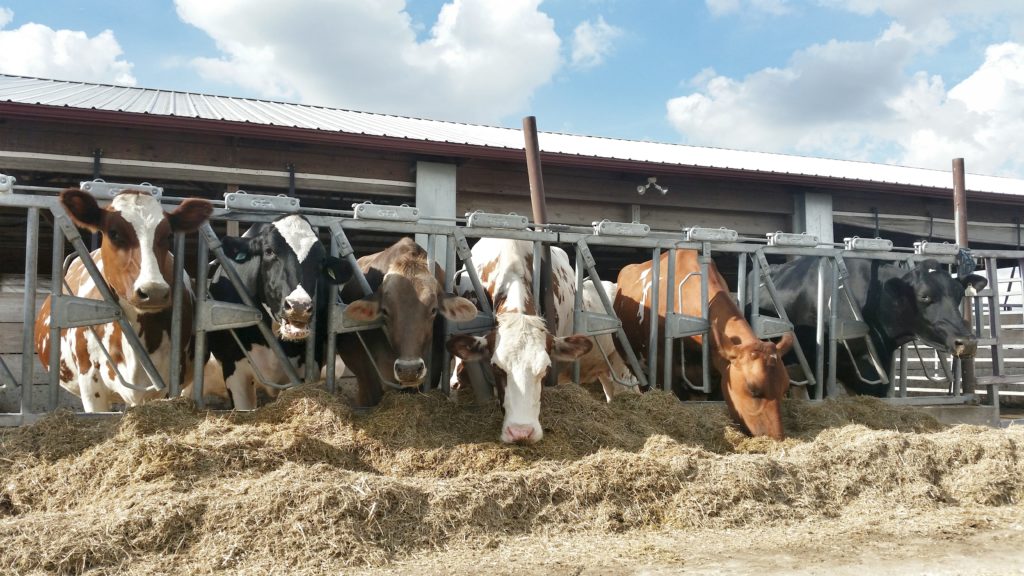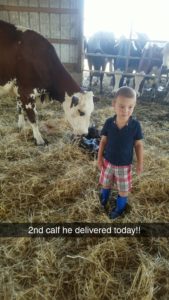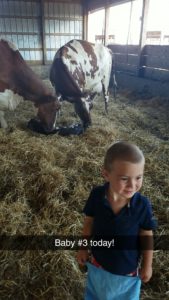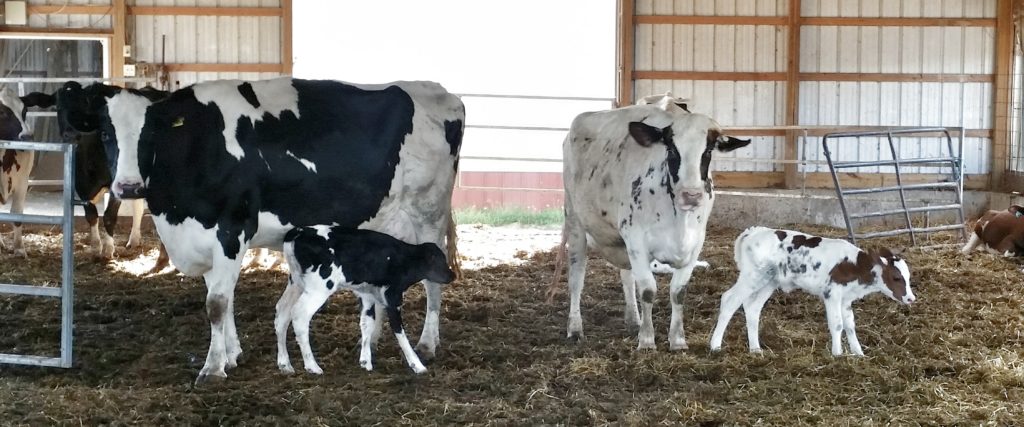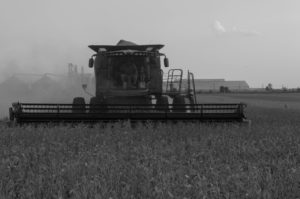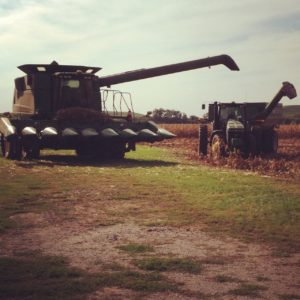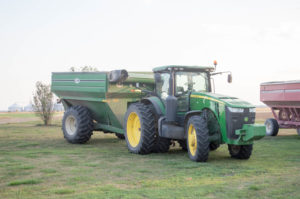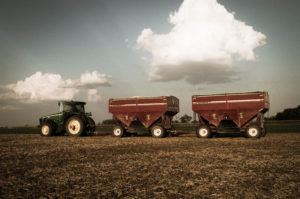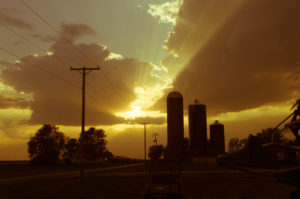The post What do dairy cows eat at our family farm? appeared first on Mackinson Dairy Farm.
]]> I recently saw this meme floating around Facebook. Sitting here eating my super tasty Prairie Farms roasted red pepper dip with some crackers, I pondered this question:
I recently saw this meme floating around Facebook. Sitting here eating my super tasty Prairie Farms roasted red pepper dip with some crackers, I pondered this question:
- Nanny – Nah. We have a pretty amazing babysitter who cares for our kids daily from 7-5.
- Personal shopper – I’ll pass. I truly do not mind grocery shopping and for everything else, there’s Amazon.
- Maid – Well… we already have one who comes every other Tuesday.
- Personal chef – This is one I could get behind. I truly enjoy cooking but my frustration, is what we should eat when. I dread the question, “what’s for dinner?”. In a perfect world, it would be really nice to have someone who knew my family’s likes/dislikes and then prepare a balanced and healthy diet for us. If my cows can have this, why cannot I?
Your cows have a personal chef?
Yes, and they have their own nutritionist!
Seriously?
Yes.
On our farm, we work extremely close with our nutritionist, Richard Mensendike from Vita Plus. Together, we regularly review every aspect of our operation, from the forages we grow to the calves all the way up to the milking herd.
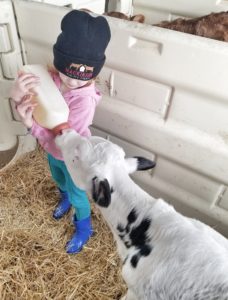 On our farm, right after a calf is born they receive colostrum.
On our farm, right after a calf is born they receive colostrum.
Colostrum intake is critical for the newborn calf, as its immune system is not fully developed when born. The colostrum contains antibodies or immunoglobulins (essential proteins) necessary to provide the calf with protection from disease. After the colostrum, the calves get fed milk replacer twice a day. Milk replacer is very comparable to baby formula. The milk replacer is mixed with hot water and it provides the newborn calf with complete nutrition for healthy growing. {To learn more about milk replacer, click here}. We also provide the calves with calf starter which helps rumen development. The calves remain on this diet until they are weaned at around 2-3 months of age.
After the calves are weaned, they are moved from individual pens to groups. Their diet now consists of dry hay and calf starter for a few weeks. When the heifers are about 4 months of age. they start receiving a total mixed ration (TMR). TMR is a way of feeding cows that combines all forages, grains, protein feeds, minerals, vitamins and feed additives formulated to a specified nutrient concentration into a single feed mix. All of the ingredients are mixed together and fed at once, like a casserole. With TMR, a cow eats a nutrient balanced ration in every bite or mouthful she consumes.
If only it was this easy for humans!
Unfortunately, it is not this easy because we are not ruminants.
Cows are ruminants, which are cud chewing mammal who have 4 digestive compartments in their stomach.
- Rumen holds up to 50 gallons of partially digested food. This is where cud comes from. Good bacteria in the rumen helps digest the cow’s food and provides protein for the cow.
- Reticulum is called the hardware stomach because if cows accidentally eat hardware (like a piece of a pop can – please do not litter), it will often lodge here causing no further damage.
- Omasum is sort of like a filter.
- Abomasum which is like our stomach.
On our farm, we grow around 75% of our milk cow’s ration. The remaining 25% of the ration, or the ingredients of corn gluten (a by-product of the wet corn milling industry that manufactures starch, sweeteners, syrup, and oil from corn) and protein are purchased locally.
In order for our cows to produce a high-quality product (milk), we must grow high quality alfalfa and corn on our farm.
The ingredients in our cow casserole we grow include:
 Corn silage – this is where we take the entire corn plant (stalk, cob, husk and kernels) and chomp it into tiny particles. Corn silage is a popular forage for cows because it is high in energy and easily digested.
Corn silage – this is where we take the entire corn plant (stalk, cob, husk and kernels) and chomp it into tiny particles. Corn silage is a popular forage for cows because it is high in energy and easily digested.
High moisture corn – we combine the corn at a high moisture (around 25%) and store only the corn kernel in our silo. The kernel is then hammered into very fine pieces almost like a dust and added to the ration. The starch is easily digestible.
Dry Hay – The alfalfa is allowed to dry and baled at a low moisture (18-20%). The alfalfa hay is baled and are 3’x3’8’ and weigh around 800 pounds.
Haylage – Alfalfa is chomped at a higher-moisture (50 – 60%) and stored in our silo where the forage ferments and is preserved. Dry hay and haylage are both fed for protein and fiber. Since the cows are ruminants, they are very efficient at digesting fiber.
Each group of cows has a specific ration which they are fed daily by Chef Donald (my Dad).
- The heifers eat between 10-30 pounds (depending on their size) of high-moisture corn, alfalfa and pellets.
- The dry cows consume around 50 pounds of wheat straw, grass hay, corn gluten, corn silage and mineral. The mineral changes as they closer (within a few weeks of calving).
- The milk cows eat around 100-110 pounds of feed daily. Their ration includes dry hay, corn gluten, corn silage, protein, high moisture corn and corn silage.
Free choice water is always available to all of our animals, regardless of age. A cow producing 100 pounds of milk will drink about 30 gallons of water and produce 45 pounds of urine and 120 pounds of manure.
It takes a village to raise a child and it takes an amazing team of professionals to manage a successful dairy farm from generation to generation.
The post What do dairy cows eat at our family farm? appeared first on Mackinson Dairy Farm.
]]>The post Mommy, the newborn calf has balls! appeared first on Mackinson Dairy Farm.
]]>Within a few minutes of being born, the newborn calf is already trying to stand on its own and was born with teeth. I don’t know about you but I could skip the entire human teething process. My kids do not sleep through the night? Why are they cranky? Do they have a snotty nose or not feeling well? Like an automatic “out of office reply”, Teething.
On our farm, we welcome around one hundred fifty calves throughout the year. When a calf is a few hours old whether it be a heifer or bull, we move the mother cow into the milking herd and the calf goes on a short gator ride to the calf barn. In the calf barn, the newborn calf is moved into a clean (individual) calf pen. The pens are 4 feet wide and 6 feet long, which allows them plenty of space to grow-up. Shortly after arriving at their new home, they are given colostrum and then vaccinated with CALF-GUARD® which aids in preventing diarrhea (scours).
If you visit our calf barn (and visitors are always welcome), you may notice we hardly ever have any bull calves. Are we this lucky and only have heifer calves? No. Several years ago, we made the decision to sell our bull calves at a few days old because we want to dedicate our resources to raising heifers, the next generation of our dairy farm. After we get a small (2-3) group of bulls, we sell them to a local family. The Miller Family raises them for about two years or until they reach market weight at 1400-1500 pounds and are sold as beef steers.
I would be lying if I said we did not have any mature bulls on our farm. Currently, we have two breeding age bulls. Mature dairy bulls can be extremely dangerous and safety is our top concern when working with them. Krazy and Eli (our bulls) are responsible for breeding a (small) pre-selected group of heifers and mature cows. On our farm, we have over three hundred females and a majority of our herd is bred artificially. Our goal is to breed cows with strong feet and legs, and udders who can last generations. My brother Matt matches the dam (mother) to an ideal sire (father). Then we cross our fingers and wait approximately 283 days. To read more about this topic, please click here.
As a Mom, you may think this sounds horrible. How can you take a baby from its mother? This is a very popular topic of conversation from activists. We do this for three very good reasons.
- When a newborn calf is born they have a very limited immune system. The newborn calf is moved into a clean calf pen where it is fed colostrum. Colostrum intake is critical for a newborn calf, as its immune system is not fully developed when born. Colostrum contains antibodies or immunoglobulins (essential proteins) necessary to provide the calf with protection from disease. The colostrum also provides the newborn calf with high amounts of important vitamins and minerals.
- Safety of the calf. We do not want the newborn calf to get stepped on (etc.) by its mother or any of the other mama cows in the maternity barn.
- Mackinson Dairy is a family dairy farm. Our farm is a business which must be profitable to support three families. We sell milk and if we do not have milk, we don’t make any money.
Whether a heifer or bull calf is born at Mackinson Dairy, it is an exciting time because we get to see the result of our hard work and dedication.
We get to see with our own two eyes if the mating was successful and hopefully it was because we are always trying to do tomorrow better than today.
As a consumer you may have questions and you may want to get to know us, the people and lives behind the product. For this reason our barn door is always open.
The post Mommy, the newborn calf has balls! appeared first on Mackinson Dairy Farm.
]]>The post Harvest is When Nature Turns to Gold appeared first on Mackinson Dairy Farm.
]]>Merriam-Webster dictionary defines “harvest” as the act or process of gathering in a crop. On our farm, we harvest two major agriculture commodities in the fall: corn and soybeans. In the spring, we planted the seeds and hoped they would grow. We actively monitored their progress and protected the plants from bugs, weeds and disease. Now, it is time for us to Harvest a bountiful crop (hopefully) and close the chapter on another successful growing season.
You may find yourself driving down the Interstate or you live in a rural community and see an unfamiliar piece of equipment.
On our farm, there are numerous pieces of equipment which aide us with harvest, here is a brief summary of each:
Combine –
the combine is probably the most important piece of equipment during Harvest. We drive the combine through the field and it will cut, thresh, and clean the grains. The grain is collected in a tank inside the combine and is periodically emptied into an auger cart or wagons. The chaff (the seed coverings and other debris separated from the seed in threshing) is expelled out the back of the combine and falls back down onto the field.
Combine Head –
this is a removable piece of equipment which attaches to the front of the combine depending on what type of crop you are harvesting.
Corn Head –
takes the entire corn stalk and removes the ear from the stalk so only the corn ear enters the combine and processes the stalk. On our farm, we are able to combine 8 rows of corn with each pass through the field.
Grain Platform –
we use a 35-foot-wide platform to harvest our soybeans, wheat or oats. The platform is responsible for cutting the stem and pulling the entire plant into the combine.
Auger Cart –
After the combine gets full of grain, the grain is unloaded into the auger cart which is being pulled by a tractor. We typically load the auger cart while we are still combining to increase efficiency. The auger cart holds 850 bushels of grain and also has large tires which helps prevent soil compaction.
Tractor and Wagons or Semi –
The harvested grain is moved from the auger cart into a wagon where it is then transported to a grain bin on our farm or to a local grain storage facility. Occasionally, we will hire a neighbor to transport our grain via semi.
Grain Bins or Elevator –
After the grain leaves the field, it is transported to a grain bin on the farm or to a grain storage facility where it will be stored until we sell it.
This is just a very broad listing of the equipment you may see on our farm during Harvest. All of this equipment is large, heavy and goes much slower than your vehicle. All vehicles need to be aware and alert so everyone gets home safely to kiss their loved ones goodnight.
In Illinois, weather is incredible unpredictable. It seems, the window to harvest our corn and soybean crop is limited and therefore requires us to put in long hours. Sometimes stress and long hours can make you act… like a jerk. Here are 7 helpful tips from Food & Swine if you find yourself in this position. In addition to Harvest, we are also taking care of our dairy cattle. Most days, we are up long before the sun comes up and finally hit the pillow long after the sunset. It can be extremely hard on all members of the household, especially the kids. If you know someone missing a loved one during their busy season, check out these tips from Abby Jacobs.
Fall is when nature turns to gold and harvest will be over just as fast as it arrived. My family has been given the amazing opportunity to cultivate the soil for over 150 years and I hope one day, my children and nephews will have the same opportunity. Cheers to a safe a bountiful Harvest!
The post Harvest is When Nature Turns to Gold appeared first on Mackinson Dairy Farm.
]]>